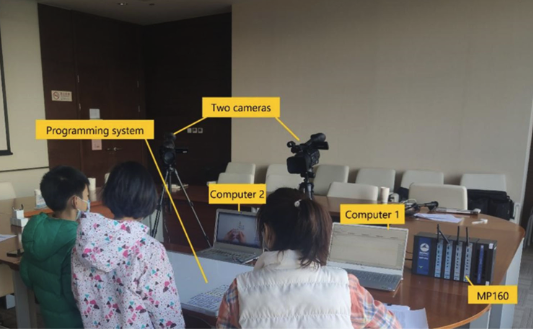“Be a Lighting Programmer”: Supporting Children Collaborative Learning through Tangible Programming System
In order to cultivate children’s computational thinking, researchers have developed many excellent programming systems. Among them, the tangible programming systems combined with graphic output have been widely accepted because of the intuitive input method and diversified visual feedback. However, few of them support collaborative learning or programming. Little is known about children’s experiences, emotional states and behaviours on collaborative programming. Motivated by this gap, we present a novel tangible and collaborative enabled programming system named Lighters, which designed for children aged 7–10 and had two types of collaboration modes (block-based and role-based). We conducted an user experiment with 24 children, and collected physiological (EDA), questionnaire, video recording and interview data for analysis. Based on our experiment results, Lighters are effective in helping children learn to program collaboratively. In addition, Lighters can mobilize children’s positive emotions and enthusiasm to learn programming. Compared with block-based collaboration, role-based collaboration is more likely to stimulate children’s emotional states and has a better effect on learning programming.
Cite this work: (2023) “Be a Lighting Programmer”: Supporting Children Collaborative Learning through Tangible Programming System, International Journal of Human–Computer Interaction, DOI: 10.1080/10447318.2022.2163783

